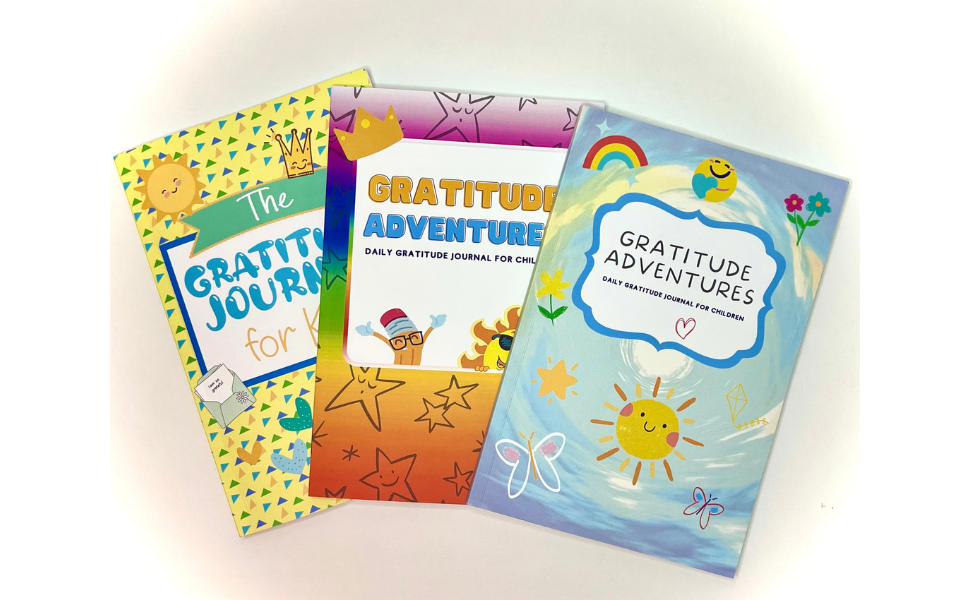The Power of Gratitude: How to Teach Your Kids to Be Thankful
- Sarah

- Nov 28, 2024
- 4 min read

Gratitude is one of the most powerful tools we can equip our children with in their journey through life. As a conscious parent, instilling this virtue in your kids is about more than just teaching them to say "thank you"—it's about helping them develop a deep sense of appreciation for the world around them, for the people in their lives, for themselves and for the experiences they encounter, both big and small.
But how do you teach your kids to be grateful in a way that feels authentic and meaningful?
Here are some practical and heartfelt strategies to help you cultivate a spirit of gratitude in your children.
1. Model Gratitude in Everyday Life
Children are like sponges—they absorb what they see, hear, and experience in their environment. The best way to teach your kids to be grateful is to model it yourself. Make a habit of expressing gratitude in front of your children. Whether it’s thanking a friend for a kind gesture, appreciating the beauty of a sunset, or simply voicing how much you value the small moments of joy in your day, your children will take note. When they see you consistently practicing gratitude, they will be more likely to adopt this attitude themselves.
2. Create a Gratitude Ritual
Incorporating a daily or weekly gratitude ritual can be a powerful way to help your children focus on the positive aspects of their lives. This could be something as simple as sharing one thing you're grateful for at the dinner table each night or having a "gratitude jar" where everyone in the family writes down something they appreciate and adds it to the jar. You can then go through these notes together at the end of the week or month. Rituals like these make gratitude a regular part of your family’s routine and help children recognize the blessings in their lives.
3. Encourage Thank-You Notes
Writing thank-you notes might seem like a small act, but it’s a meaningful way for kids to express their gratitude in a tangible way. Encourage your children to write thank-you notes for gifts they receive, but also for acts of kindness, help from a friend, or even to someone who has simply made their day better. This practice not only teaches them to acknowledge and appreciate others, but it also helps them reflect on the reasons they are thankful.
4. Practice Gratitude in Nature
Nature provides countless opportunities to practice gratitude. Take your kids outside and encourage them to notice the beauty around them—the warmth of the sun, the sound of birds singing, the feel of the earth under their feet. You can make this a mindful exercise by asking them to close their eyes and focus on what they can hear, smell, or feel. This practice helps children connect with the world in a deeper way and fosters a sense of appreciation for the natural world.
5. Teach Gratitude Through Giving
One of the best ways to cultivate gratitude is by encouraging your kids to give back. Whether it’s volunteering together as a family, donating toys they no longer use, or baking cookies for a neighbor, these acts of kindness help children understand the importance of giving and the joy it brings to others. When children experience the positive impact they can have on someone else's life, they begin to appreciate their own blessings more fully.
6. Mindful Breathing and Reflection
Teaching your children to take a few moments each day to practice mindful breathing and reflect on what they are grateful for can be incredibly beneficial. This doesn’t have to be a long process—just a few deep breaths and a quiet moment to think about something positive in their day. This practice helps children slow down, become more aware of their emotions, and recognize the good things in their lives, no matter how small.
7. Gratitude Through Storytelling
Stories are a powerful way to convey the importance of gratitude. Share stories with your kids that highlight characters who practice gratitude or read books together that emphasize the value of appreciating what you have. You can also encourage your children to share stories from their own lives that make them feel grateful. Storytelling not only reinforces the lesson of gratitude but also helps children connect emotionally with the concept.
Cultivating Gratitude with Intention
Teaching your kids to be grateful is a lifelong journey, but it’s one that reaps incredible rewards. By incorporating these practices into your daily life, you’re helping your children develop a mindset that will serve them well throughout their lives—one that’s rooted in appreciation, kindness, and mindfulness.
Love Always,
Sarah
To further support your child in cultivating gratitude, I’ve created 3 different designs of Gratitude Journal for Kids. This journal is designed to make gratitude fun and engaging, with prompts and activities that encourage your child to reflect on the good things in their lives. It’s a wonderful tool to help them develop a lifelong habit of gratitude.
To order your child's journal today;

.png)



Comments